Abstract
The Harderian gland of the golden hamster is an important model of porphyrin biosynthesis. In the female, ovariectomy leads to changes in porphyrin production and gland structure. The present study demonstrates that these changes are progressive and independent of age and environmental factors which may have similar effects. Porphyrinogenic enzyme activity decreases with time after ovariectomy while tubule wall degeneration and neutrophilic infiltration increase. Tubule degeneration leads in turn to porphyrin stores (normally intraluminal) occurring increasingly in the interstitial tissue of the gland, either as large accretions surrounded by foreign body giant cells or as small deposits inside individual free macrophages. Between 20-30 weeks after ovariectomy, the frequency of mitotic figures begins to increase accompanied by a transient rise in porphyrinogenic enzyme activity. Mast cell numbers (both in the gland and its capsule) increase markedly with time after ovariectomy.
Full text
PDF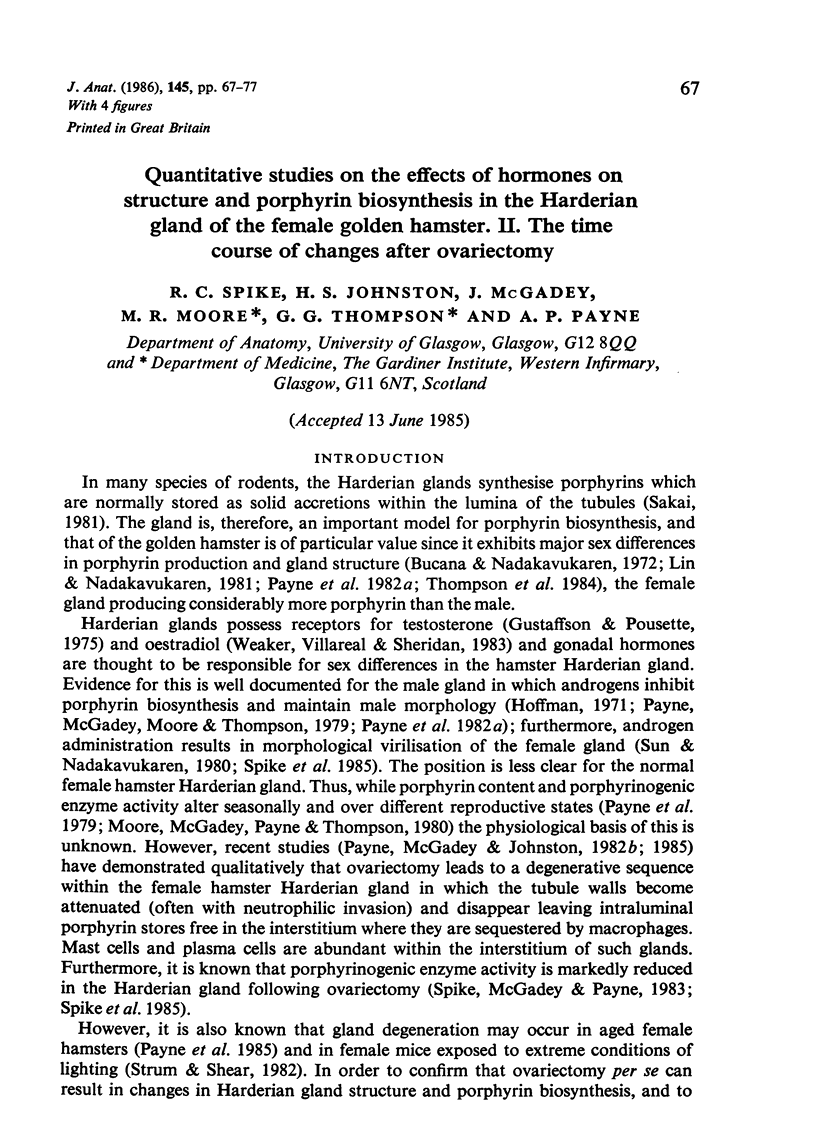

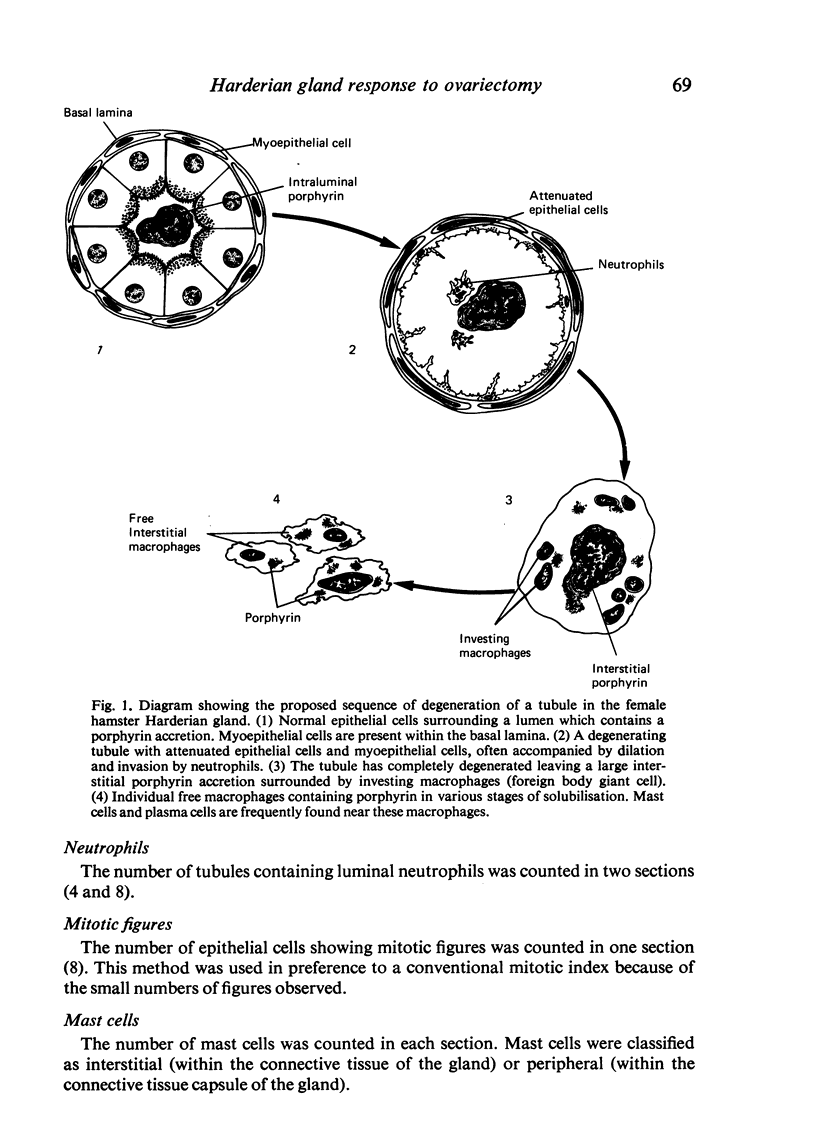
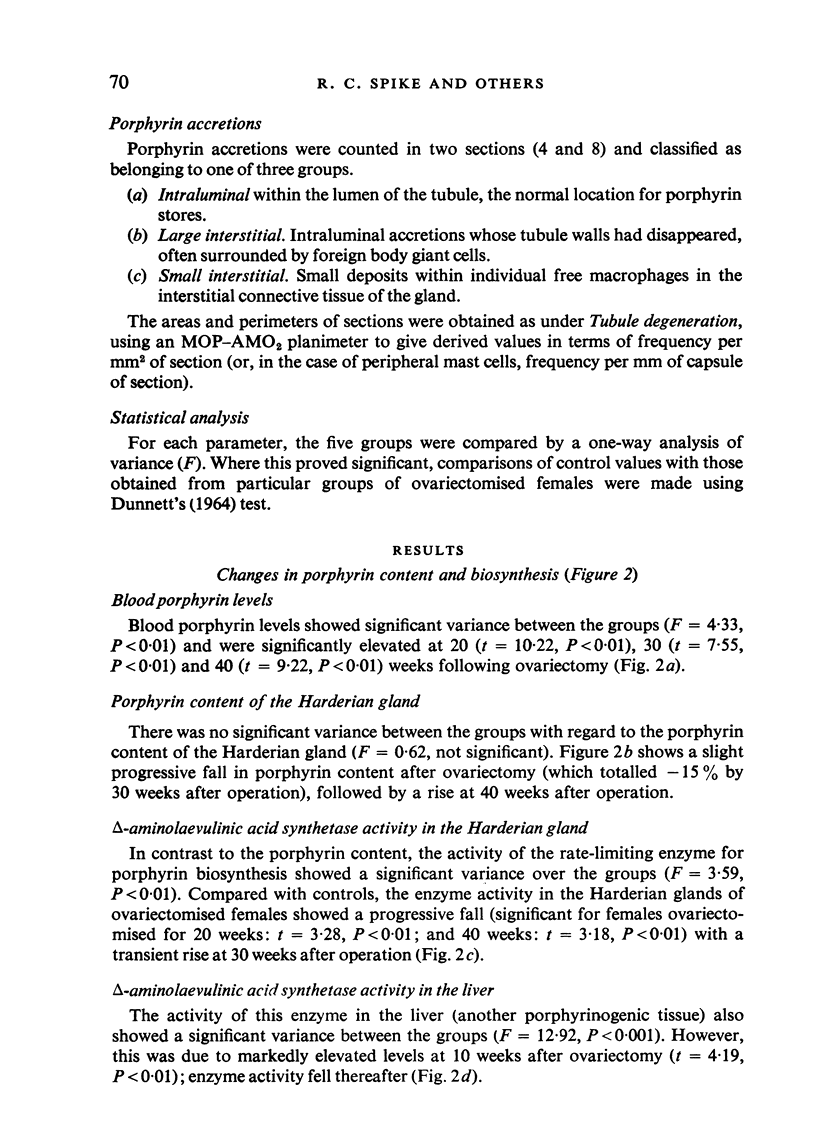

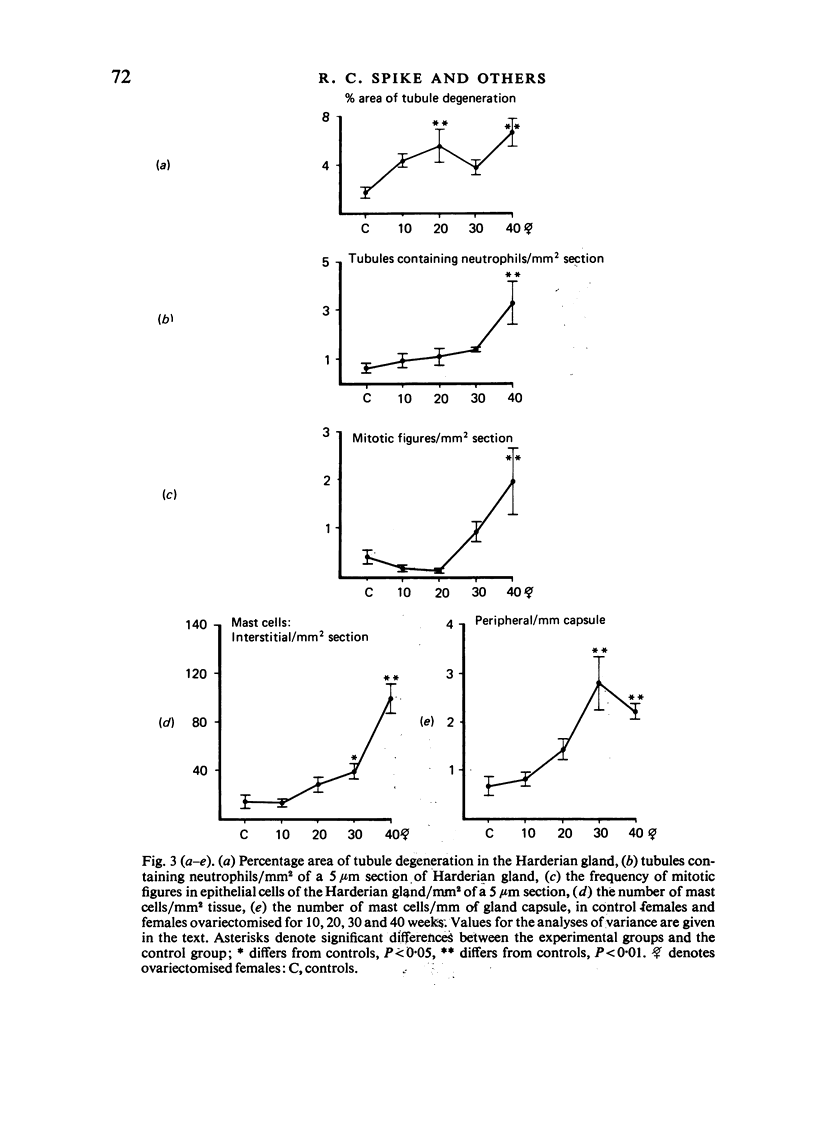

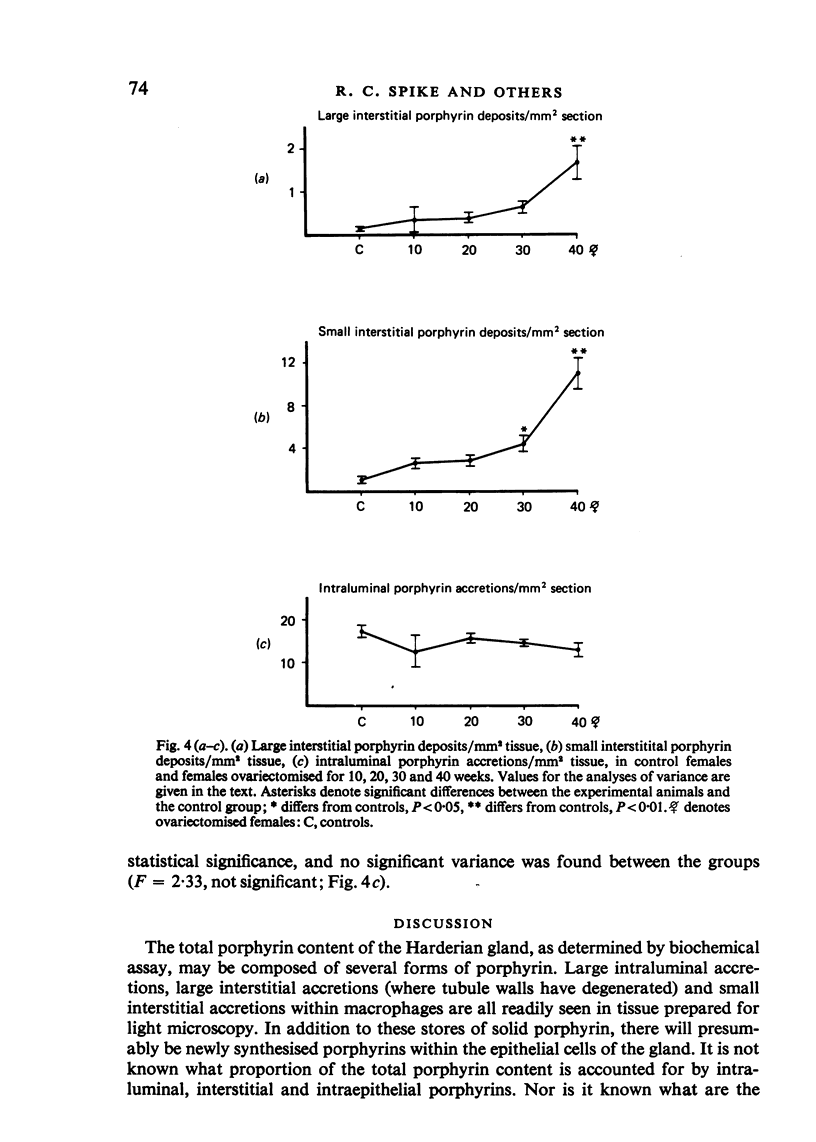
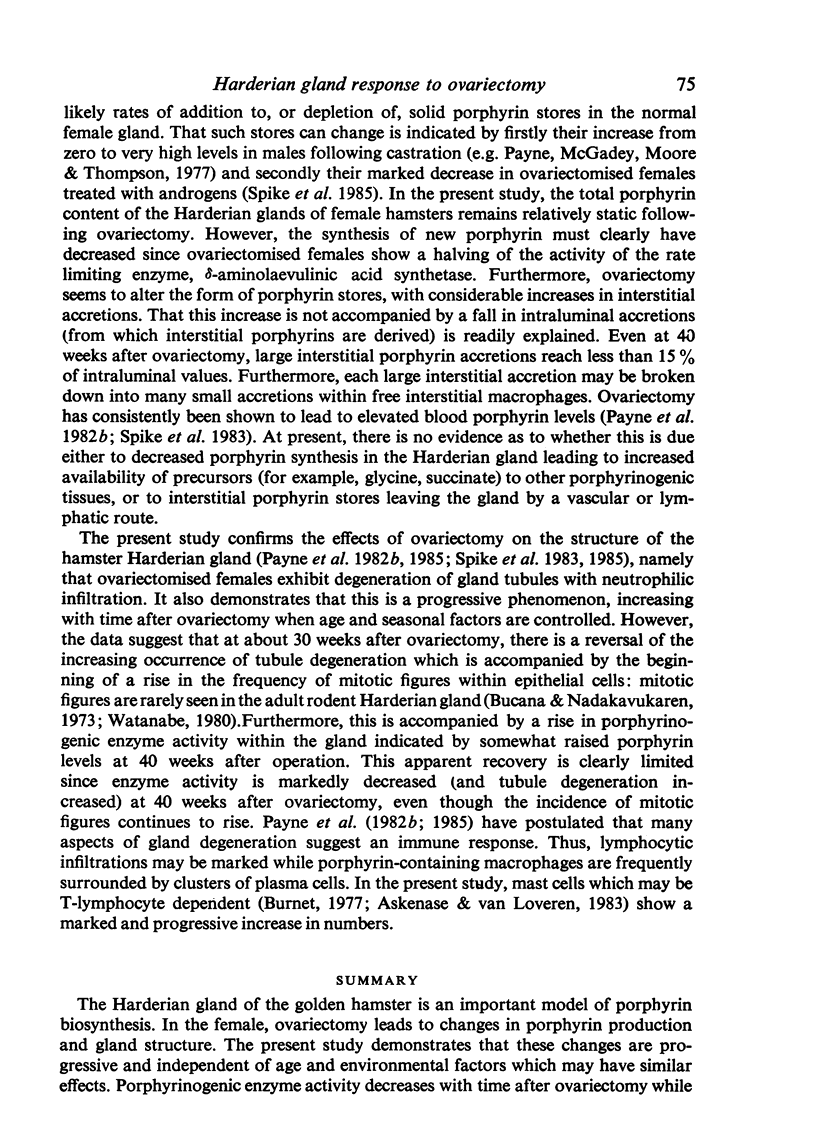

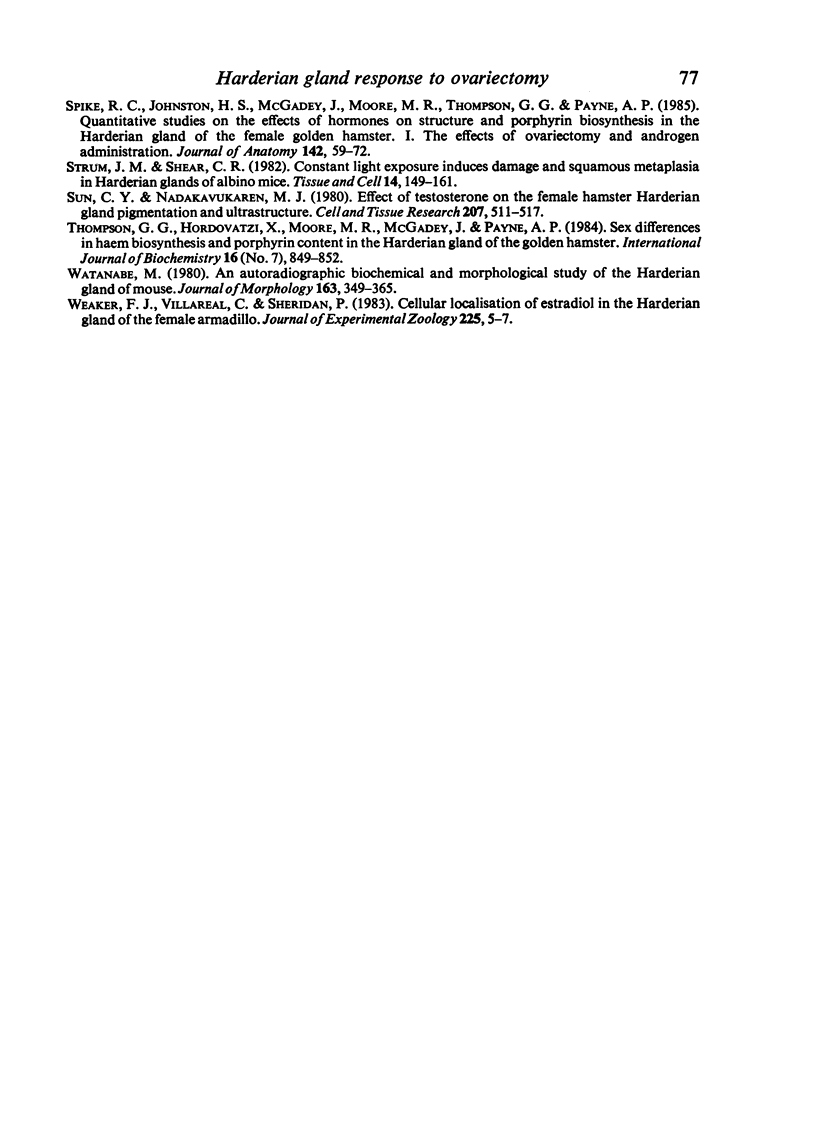
Selected References
These references are in PubMed. This may not be the complete list of references from this article.
- Bucana C. D., Nadakavukaren M. J. Fine structure of the hamster Harderian gland. Z Zellforsch Mikrosk Anat. 1972;129(2):178–187. doi: 10.1007/BF00306934. [DOI] [PubMed] [Google Scholar]
- Bucana C. D., Nadakavukaren M. J. Ultrastructural investigation of the postnatal development of the hamster Harderian gland. II. Male and female. Z Zellforsch Mikrosk Anat. 1973 Aug 27;142(1):1–12. doi: 10.1007/BF00306700. [DOI] [PubMed] [Google Scholar]
- Burnet F. M. The probable relationship of some or all mast cells to the T-cell system. Cell Immunol. 1977 May;30(2):358–360. doi: 10.1016/0008-8749(77)90079-x. [DOI] [PubMed] [Google Scholar]
- Freshney R. I., Paul J. Measurement of aminolaevulinate synthetase activity in normal mouse liver with [2-14C] glycine. Biochim Biophys Acta. 1970 Dec 16;220(3):594–601. doi: 10.1016/0005-2744(70)90289-5. [DOI] [PubMed] [Google Scholar]
- Gustafasson J., Pousette K. Demonstration and partial characterization of cytosol receptors for testosterone. Biochemistry. 1975 Jul 15;14(14):3094–3101. doi: 10.1021/bi00685a009. [DOI] [PubMed] [Google Scholar]
- Hoffman R. A. Influence of some endocrine glands, hormones and blinding on the histology and porphyrins of the Harderian glands of golden hamsters. Am J Anat. 1971 Dec;132(4):463–478. doi: 10.1002/aja.1001320405. [DOI] [PubMed] [Google Scholar]
- LOWRY O. H., ROSEBROUGH N. J., FARR A. L., RANDALL R. J. Protein measurement with the Folin phenol reagent. J Biol Chem. 1951 Nov;193(1):265–275. [PubMed] [Google Scholar]
- Moore M. R., Thompson G. G., Payne A. P., McGadey J. Seasonal variation in delta-aminolaevulinate synthase and porphyrin content in the Harderian gland of the female golden hamster (Mesocricetus auratus). Int J Biochem. 1980;12(3):501–504. doi: 10.1016/0020-711x(80)90137-8. [DOI] [PubMed] [Google Scholar]
- Payne A. P., McGadey J., Johnston H. S. Interstitial porphyrins and tubule degeneration in the hamster Harderian gland. J Anat. 1985 Jan;140(Pt 1):25–36. [PMC free article] [PubMed] [Google Scholar]
- Payne A. P., McGadey J., Johnston H. S., Moore M. R., Thompson G. G. Mast cells in the hamster Harderian gland: sex differences, hormonal control and relationship to porphyrin. J Anat. 1982 Oct;135(Pt 3):451–461. [PMC free article] [PubMed] [Google Scholar]
- Payne A. P., McGadey J., Moore M. H., Thompson G. G. Changes in Harderian gland activity in the female golden hamster during the oestrous cycle, pregnancy and lactation. Biochem J. 1979 Mar 15;178(3):597–604. doi: 10.1042/bj1780597. [DOI] [PMC free article] [PubMed] [Google Scholar]
- Payne A. P., McGadey J., Moore M. R., Thompson G. Androgenic control of the harderian gland in the male golden hamster. J Endocrinol. 1977 Oct;75(1):73–82. doi: 10.1677/joe.0.0750073. [DOI] [PubMed] [Google Scholar]
- Sakai T. The mammalian Harderian gland: morphology, biochemistry, function and phylogeny. Arch Histol Jpn. 1981 Sep;44(4):299–333. doi: 10.1679/aohc1950.44.299. [DOI] [PubMed] [Google Scholar]
- Spike R. C., Johnston H. S., McGadey J., Moore M. R., Thompson G. G., Payne A. P. Quantitative studies on the effects of hormones on structure and porphyrin biosynthesis in the Harderian gland of the female golden hamster: I. The effects of ovariectomy and nitrogen administration. J Anat. 1985 Oct;142:59–72. [PMC free article] [PubMed] [Google Scholar]
- Strum J. M., Shear C. R. Constant light exposure induces damage and squamous metaplasia in Harderian glands of albino mice. Tissue Cell. 1982;14(1):149–161. doi: 10.1016/0040-8166(82)90014-3. [DOI] [PubMed] [Google Scholar]
- Sun C. Y., Nadakavukaren M. J. Effect of testosterone on the female hamster Harderian gland pigmentation and ultrastructure. Cell Tissue Res. 1980;207(3):511–517. doi: 10.1007/BF00224624. [DOI] [PubMed] [Google Scholar]
- Thompson G. G., Hordovatzi X., Moore M. R., McGadey J., Payne A. P. Sex differences in haem biosynthesis and porphyrin content in the Harderian gland of the golden hamster. Int J Biochem. 1984;16(7):849–852. doi: 10.1016/0020-711x(84)90201-5. [DOI] [PubMed] [Google Scholar]
- Watanabe M. An autoradiographic, biochemical, and morphological study of the harderian gland of the mouse. J Morphol. 1980 Mar;163(3):349–365. doi: 10.1002/jmor.1051630308. [DOI] [PubMed] [Google Scholar]
- Weaker F. J., Villareal C., Sheridan P. J. Cellular localization of estradiol in the harderian gland of the female armadillo. J Exp Zool. 1983 Jan;225(1):5–7. doi: 10.1002/jez.1402250103. [DOI] [PubMed] [Google Scholar]


